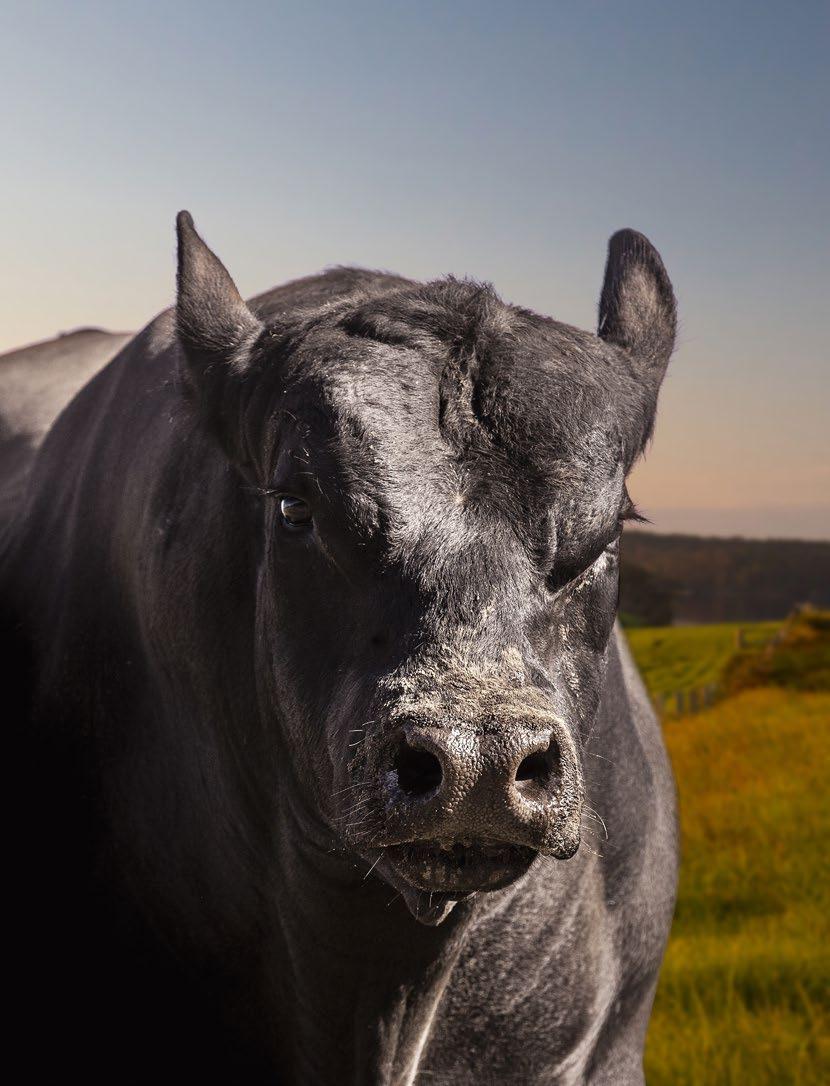
HIGH PERFORMANCE ANGUS CATTLE 2023

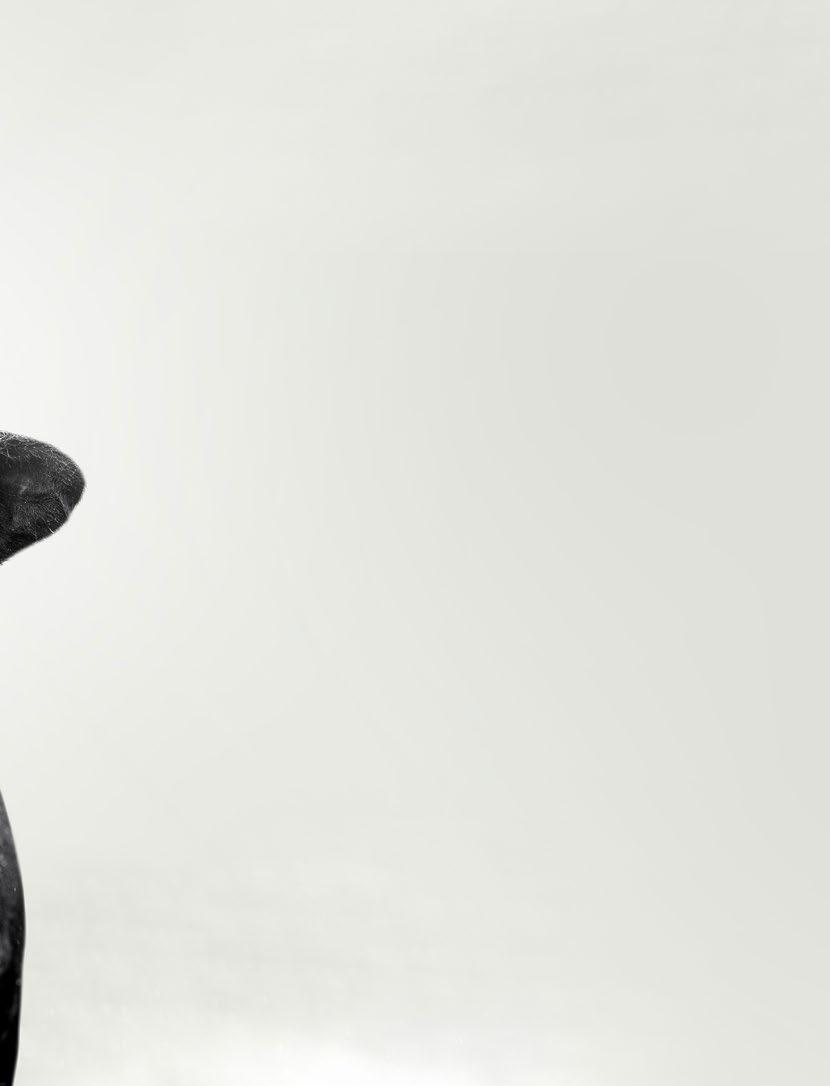
05 Our Story 06 Twin Oaks Angus - The Backbone 13 $PRO Selection Index - The Science 14 Te Waimate - Commercial Gains 19 Chimichurri Sauce - Recipe 21 Genomics Prove Worth - Viewpoint 22 Te Mania - The Backbone 28 Carcase Quality Improving - The Reward 31 Structural Soundness - The Science 34 Knight Partnership - Commercial Gains 38 Cost of Live Export Ban 40 Introduction to Angus.tech 41 Stock Agent’s Toolkit - The Science 45 Nancy Crawshaw - Our Team 46 Te Pa Station - Commercial Gains 52 Vytelle ADVANCE Hormone Free IVF 53 Angus App 54 Value of Docility - The Science 56 Unforgotten Gems from the Darkroom 58 Breeder Directory CONTENTS The
Magazine is published in association with
Editor:
The views expressed in this magazine are not necessarily
2023 AngusPRO
Country-Wide
Sarah Horrocks Sub Editor: Alison Robertson Designer: BMR Creative AngusPRO Chairman: Tim Brittain, Storth Oaks Angus
the
views
of Angus Australia or the AngusPRO members here in New Zealand. AngusPRO.co.nz
1 Enter your details at bidr.co.nz
bidr® is NZ’s virtual saleyard where livestock is sold through

real time auctions.
bidr® provides sellers access to a wider pool of buyers, while buyers benefit from having more choice of stock.
With the ability to view, bid and buy online, buyers can look nationally for the genetics that is right for their farming operation.
Now with eleven accredited agencies:

4
and sell livestock from anywhere.
buy, sell all
rural. Visit bidr.co.nz
your stock
Buy
Bid,
things
or contact
agent today.
bid.
Browse listed auctions and livestock. Register for the auction and
2 3
OUR STORY
AngusPRO are a group of New Zealand Angus studs that encompass over 40% of New Zealand’s registered Angus cattle. These studs have united and made the shift across the ditch, to join the progressive governing body that is Angus Australia. Angus Australia pride themselves on their quality of leadership in the delivery of innovative programs that will enhance and promote the value of Angus cattle and beef.
Everyone in the industry knows that profitability within a cattle system can be improved by making educated predictions with factual data. It’s scientifically proven. While ensuring cattle are of sound structure and are quiet in nature, the additional use of science and genomics can assist in viewing what’s under the skin of an animal, providing an insight into what future progeny will look like, grow like, breed like and essentially, eat like.
By shifting to Angus Australia, AngusPRO have opened the gateway to technological and education facilities for the studs involved and their clients that are second to none. In what may seem like an administrative shift, we’re all gaining a support network of 30-odd staff, countless educational documents and webinars, training sessions, technological tools, extensive research and continuing breed development. And that’s just the tip of the iceberg.
Angus cattle are the backbone of the New Zealand beef industry. In the commercial environment they’re expected to survive. Amid winter conditions of driving rain and inches of snow they will forage and not only survive, they will thrive. It’s in their DNA.

When stud females are mated as heifers, this replicates the commercial farming model and improves overall fertility within the herd. Increased profitability is therefore bred into those progeny, so to speak. EBVs are the best available tool we have in predicting future progeny and when stud breeders use technologies such as HD50k and Angus GS, the accuracy of EBVs and Indexes is increased.
Angus Australia is focused on supporting the genetic improvement of Angus cattle. Their Angus.Tech suite includes a range of software tools and technologies, such as Angus SELECT, which has been developed to support members in improving the profitability of Angus genetics within the beef supply chain, by assisting with the identification of those genetics that are most aligned with their breeding goals and objectives.
While increased profitability for the client is at the forefront of our AngusPRO members’ aspirations, producing the finest grass fed eating experience for the end consumer is absolutely imperative. This is their ultimate focus.
Maintaining high standards of sustainable farming practice to ensure the land is enhanced for generations to come is of course, part of daily life for the AngusPRO team. The environment here in New Zealand must be nurtured, with clear water in the streams and rich soils underfoot. It should go without saying that animal husbandry is paramount. These ideals and quality grass fed Angus beef go hand in hand for the end consumer.
Although we are a newly formed entity, many of the studs represented have stood the test of time. They are the perfect synergy of old school reputability and new school technique. AngusPRO are committed to bettering Angus cattle within the New Zealand beef industry and ensuring Angus is the tastiest beef on everyone’s lips.
anguspro.co.nz 5 THE STORY
DREAM TAKES TWIN OAKS NORTH
Words by Sarah Horrocks and images by Greg Bowker
When Roger and Susan Hayward shifted the Twin Oaks Angus stud to Te Akau in March 2016, their 16-unit loads of stud females trundled up the South Island from Albury, across Cook Strait and steamed into the Waikato with genetics aplenty and all hooves crossed.

The Haywards said at the time that they’d give their dream 10 years and if the stud didn’t work they’d be content with running commercial cows.
Back in South Canterbury, Twin Oaks had been selling about 20 two-year-old bulls annually, a humble beginning for a firstgeneration Angus stud that was established on a property more suited to intensive farming than cows. Roger and Susan knew that if they wanted to progress they had to make a bold move, but overseas investors kept pushing them out of the most suitable farms in the South Island.
“The cost of land compared to the return on our business just wasn’t going to work,” Roger says.
After a land hunt that lasted two years, the couple ended up at Waipapa Station in Te Akau, nestled just north of Raglan on the west coast and 60km from Hamilton.
In the past seven years, the stud has thrived and seems to suit the 865ha station. After their first June on-farm sale in 2016, Roger and Susan made the decision to introduce a yearling sale with the idea of giving clients the opportunity to purchase a lower-priced bull that was well suited to yearling-heifer mating. In what seems like a short time for the stud breeding game, the two Twin Oaks sales have rapidly grown, now selling 50 bulls at each, as well as another 25 bulls in the paddock.
“At least 55 of those bulls are heading back down to the South Island.”
The yearlings aren’t an inferior product, they just appeal to different markets. Roger says that while some potential buyers worry they won’t grow out by December when their South Island clients are using them, they’re always at or above 600kg.
THE BACKBONE 6
Stud female numbers now rest at 400 (including two-year heifers), and there are another 150 yearling heifers mated. Trade lambs are brought in as feed allows, and the total wintering capacity of the operation is 10,000 stock units.
“With the lambs, we buy anything and everything but do try to buy them in lines if we can.”
Although the operation is a straight grass programme for the cattle, 40ha of rape is grown for the lambs and this enables a five-year regrassing programme across the paddock country on Waipapa.

Cows do it tough
The climate is harsh, with wet winters and hot, dry summers, and Roger is first to admit the cows do it tough. He believes that if he started feeding silage in the droughts he’d always have to feed them. So it’s a hard-line policy.
“The cows climb for their feed and have to burn it off their backs in summer.”
Like all North Island hill country farms, the cows are used as a grazing tool to clean up pasture for the sheep (lambs in this
case) and there’s no special treatment.
All females, including the yearling heifers, are put through artificial insemination (AI) in November and then put out in mobs of 70 with home-bred yearling bulls for 1.5 cycles (five weeks) to follow up.
The conception rate for AI sits at 65‒-75% in the main cow mob, with yearling heifers at about 60%. After the follow-up bulls, they end up with approximately 7% empty over the two cycles and these are culled.
“Two cycles maintains our high fertility in the herd and keeps calving dates condensed,” Roger says.
Once they’re scanned in-calf, the cows go out in calving-date mobs of 60-‒100, with the exception of the yearling heifers who stay on their own.
The AI sires used are either home bred or sourced from Australia, and have been for a few years now. The yearling bulls sold in 2022 were primarily by Millah Murrah Paratrooper, who was used heavily over the last two calf drops and there are around 80 yearling heifers by him.
anguspro.co.nz 7
Paratrooper the key Roger says that everyone is trying to get phenotype, structural soundness and fertility, as well as every EBV trait, into a single bull package.
“When we saw Paratrooper’s data we knew we had to go over and have a look at him.”
So in September 2019 Roger and Susan flew to Australia for the Millah Murrah sale because Paratrooper’s data told them he was going to be efficient, more compact and different to everything else. And he was. Roger says his structure and phenotype were incredible.
“He is stacked with calving ease, growth, fertility; he’s almost perfect when it comes to the EBVs we want.”
The Haywards were in the syndicate of underbidders and secured 18 months of exclusive semen rights in New Zealand, taking 500 doses. Paratrooper’s progeny sold the strongest of those auctioned at the yearling sale in 2022, and there are more being offered at the two-year-old sale on June 9 this year.

“He’s the bull we’d been searching for and he’s really exciting!”
Paratrooper has given the Twin Oaks’ herd a big jump in the direction of their main objectives ‒soundness, efficiency, fertility,
phenotype, carcase attributes, growth and calving ease, and it’s all there in one package. This is a big win for both the Haywards and their clients.
Efficiency is a factor that should underpin all good breeding programmes. A cow that gets in calf every year, grows that calf, eats the least amount possible and then gets back in calf again, every year. Part of this is returns, and Susan knows that although you’re paid on carcase weight in NZ, if you can hit quality premiums for marbling you’ll be rewarded.
“You get $1/kg more for meat quality,” she says.
In 2021 the Haywards also purchased Waitara Quidditch in Australia and received his semen between Christmas and New Year. So they held back some cows for late AI and have calves on the ground to him now. He is under contract with Genetics Australia.
“Quidditch has good calving ease, moderate growth, low mature-cow weight but still a huge carcase weight,” Roger says.
Twin Oaks has a range of clients wanting a wide range of bulls. Roger and Susan ultimately source the bulls for their own cow herd to produce the females they need. However, they can still produce an animal for everyone.
THE BACKBONE 8
“ With genomics you can have average growth and still get high carcase weights.”
“With genomics you can have average growth and still get high carcase weights.”
Millah Murrah Nectar is another bull they purchased as a half share in 2021. They needed him for a line of their females because he has moderate growth, high fats and superb marbling.
“The biggest problem that we have in performance cattle is keeping them structurally sound and at Millah Murrah you seem to get 100% soundness,” Roger says.
Finishing facts
While Twin Oaks doesn’t run any trade steers for biosecurity reasons, the stud does finish 80-‒100 of its own heifers annually. These are yearlings that are empty or not suitable for mating, as well as any once-bred heifers that aren’t kept as replacements.
The heifers are processed through Alliance’s Handpicked programme and 100% of them hit the premium grade specs. Susan says that although this is reassuring, it’s more rewarding when they receive kill sheets from clients who are hitting those grades with their own progeny at Alliance and Silver Fern Farms.

There are a number of clients who have been eye-muscle scanning for a number of years and selecting the heifers with the highest IMF to use as their replacements. With the help of the right genetics, they’re getting good improvements in their cow herds.
“The ones who have been doing that the longest are going great-guns,” Susan says.
Future proofing
Technology is something Roger and Susan invest in heavily, using every tool available. Every animal on the farm is HD50ktested to improve accuracy of EBVs and everything is eyemuscle scanned, even the culls. More information means more knowledge.
Shifting their data to Angus Australia in 2021 gave access to new EBVs, including claw set, foot angle, net feed efficiency and now leg angle too. The Haywards pushed pretty hard in the initial phase of the shift because they could see the professionalism, resources, educational tools and technological development were far superior to what was provided in New Zealand.
anguspro.co.nz 9
“ We needed to be part of that change, to move the beef industry forward here in New Zealand ”
“We needed to be part of that change, to move the beef industry forward here in New Zealand,” Susan says.
Going forward, Roger and Susan are holding their course, with thoughts to increase the number of bulls sold if that can reduce their bull wastage. They currently sell just over half the bulls they breed, due to their strict selling criteria.
“They have to be sound, semen tested and industry good as far as carcase and meat quality goes,” says Roger.
Australian Ben Simpson of OGA creative agency is enlisted to video the bulls every year and the Haywards believe this is an essential marketing tool. In June 2022, Susan realised that when clients rang to ask about bulls in the catalogue, they only ever asked about the ones with photographs. So for the last yearling sale, every bull had a video published on bidr. No matter where a client is in the world, they can have a good look at those videos and place a bid on sale day.
“Bidr is a really important tool for our clients,” says Susan.
In the quieter periods, the Haywards take time to visit their clients, which means the best part of two-and-a-half months on the road every year. This is seen as extremely valuable time because they know how the bulls are working, where they are working, and they get good insight into their clients’ programmes.
During school and university holidays, Roger and Susan’s three children are home to help: Thomas is a second-year law student, Olivia (16) finished school in 2022 and has just gone farming, and Jessica (13) is at school in Hamilton.
At the end of the day, Roger and Susan made the decision to move to the North Island for their family unit. They have established themselves on a palatial farm and they’re bettering it every year, with waterways, dams and the harbour now fenced and 30,000 new native plants in the ground.
The Twin Oaks dream has become a reality for Roger and Susan Hayward, and luck has had nothing to do with it.

THE BACKBONE 10



anguspro.co.nz 11 ANGUS STUD – TE AKAU NZ ANNUAL TWO YEAR OLD BULL SALE 9TH JUNE 2023 CALVING EASE YEARLING BULL SALE 21ST SEPTEMBER 2023 For more information please contact Roger & Susan Hayward Waipapa Station, 163 Clemett Road, Te Akau P 07 828 2131 M 027 6855989 E twinoaksangus@gmail.com twinoaksangus.co.nz

ANGUSPRO INDEX DEVELOPED SPECIFICALLY FOR THE NEW ZEALAND FARMING SYSTEM AND MARKETS
Selection indexes have been published within the TransTasman Angus Cattle Evaluation for several decades and have made an important contribution to the genetic improvements that have been achieved within the Angus breed during this time.
Selection indexes aid in the selection of animals for use within a breeding program where there are several traits of economic or functional importance by providing an overall “score” of an animal’s genetic value.
Selection indexes are calculated for a specific breeding purpose and are calculated based on weightings placed on individual traits that are deemed to be important for that purpose.
The selection indexes assist in making “balanced” selection decisions, taking into account the relevant attributes of each animal to identify animals with genetics that are most aligned with the breeding objective for the given selection scenario.
The selection indexes published within TransTasman Angus Cattle Evaluation are economic selection indexes and are derived using BreedObject software, as developed by the Animal Genetics & Breeding Unit (AGBU) in Armidale, NSW.
Ten indexes are currently published as part of the TransTasman Angus Cattle Evaluation. Of these, the Angus Breeding and Angus Breeding Low Feed Cost selection indexes are general purpose selection indexes that are suitable for use in the majority of commercial beef operations, while the AngusPRO selection index is specific to New Zealand production systems and beef markets.
Selection Index Summary
• New Zealand production system Self replacing herd
• Daughters are retained for breeding
• Steer progeny are finished on pasture for the AngusPure programme.
• Steer progeny slaughtered at a carcass weight of 290kg at 20 months of age
• Significant premium for steers that exhibit superior marbling
The AngusPRO index ($PRO) estimates the genetic differences between animals in net profitability per cow joined in a commercial self-replacing herd based in New Zealand that targets the production of grass finished steers for the AngusPure program.
Daughters are retained for breeding and therefore female traits are of importance.
Steers are assumed marketed at approximately 530kg live weight (290kg carcass weight with 10mm P8 fat depth) at 20 months of age, with a significant premium for steers that exhibit superior marbling.
Traits Contributions
The graph below shows the traits that are considered in the $PRO index, and how much they contribute to the overall balance of the selection index. The larger the segment, the greater the impact on the Selection Index.
Selection Advantage
Figure 2 shows the selection advantage if animals are selected using the $PRO index.
The selection advantage is calculated by ranking well-used sires within the Angus breed on the $PRO index, and comparing the average EBVs of the sires in the highest 10% with the average EBVs of all sires from which they were selected. For example, the sires ranked in the highest 10% based on the $PRO index had 9kg higher 400 Day Weight EBVs and 1.2kg lower Birth Weight EBVs than the average EBVs of the sires from which they were selected.
The selection advantage is indicative of the long-term direction and relativity of response that will occur in individual traits if selection is based on the $PRO index. The actual response that is observed will vary depending on the features of the individual breeding program.
A feature of the $PRO index is a selection advantage of close to zero for mature cow weight, meaning that selection on this index will maintain mature cow weight, while still increasing growth to 200, 400 and 600 days of age.
anguspro.co.nz THE SCIENCE 13
AngusPRO Index ($PRO)
CED +5.8 % CEDtrs +4.5 % GL -1.2 days BW -1.2 kg WW +6 kg YW +9 kg FW +9 kg MCW -0 kg Milk +1 kg DTC -2.6 days SS +0.2 cm CW +8 kg EMA +1.6 cm2 Rib +0.3 mm Rump +0.1 mm RBY -0.2 % IMF +1.2 % NFI-F +0.27 kg/day DOC -2 % CED CEDtrs GL BW 200 400 600 MCW Milk DTC SS CW EMA Rib Rump RBY IMF NFI-F DOC Relative Change in Individual Traits
Increase Decrease Carcass Quality 8% Fertility 18% Mature Cow Weight 11% Calving Ease 14% Growth 28% Carcass Yield 14% $PRO
Figure 2 - Selection Advantage for the AngusPRO Index
ANGUS BRING GROWTH AND FLEXIBILITY
Words by Sandra Taylor and images by Sarah Horrocks
Change is a constant on Te Waimate.
While the 980ha hill country farm on the outskirts of Waimate has been home to the Studholme family for generations, it is their ability to adapt to ever-changing market demands, economic environments and weather patterns that has enabled them to remain productive and profitable.
Henry Studholme is at the helm of Te Waimate, which he farms alongside his parents Mike and Jan. Three years ago, in response to two consecutive years of extremely dry weather, the family made the decision to build more flexibility and safety valves into their farm system.
This has meant reinstating an Angus breeding cow herd, lifting ewe numbers and reducing their once-bred heifer programme.
Five years ago, the family was running a cattle to sheep ratio of 75:25 (770 cattle and 1450 Perendale ewes), the opposite of what was typical on the majority of sheep and beef properties, with a focus on Angus once-bred heifers.
More than 400 heifers were either sold prime to local trade or as a breeding proposition once they had reared a calf. The steer progeny was grown out and sold to Five Star feedlot before their second Christmas, while all heifer calves were retained for breeding. To make up numbers, replacement heifer calves were bought in.
This system meant every cattle beast on the farm needed to be growing all the time and in the case of the heifers, they needed to be able to grow themselves as well as their calves.

COMMERCIAL GAINS 14
“ Our main objective is growth because that’s what makes us money.”
While this worked well for close to a decade, the two back-toback dry years highlighted the need for more stock classes that could either be maintained, as is the case with the breeding cows, or sold.
“We couldn’t push the heifers, we needed something we could use as a tool,” says Henry.
“A couple of years of dry weather was the catalyst for that, we had nowhere to go. It was really tough as no-one wanted cows and calves and we couldn’t wean the calves early. It highlighted to us that there were easier ways to do things.”
Henry built the breeding cow herd by retaining heifer calves, 50 one year and 60 the next, so he now has a young cow herd to which 10‒-15 replacements are added every year.
Te Waimate is two-thirds hill country and one-third flat to rolling, of which 120ha is irrigated by k-line irrigation to augment the typical annual rainfall of 650mm.
Set up in 2004, the k-line, which draws water from the Waitaki River, suits the farm’s rolling topography and required less capital investment than other types of spray irrigation.
The hill country is deceptively steep with a mix of improved pastures and native vegetation. The cows call this country home all year round, calving on autumnsaved pasture.
Henry says the cows are very much a pasture management tool, and over winter electric fences are used to help push the cows into corners to do a thorough cleanup job, preparing pastures for lambing ewes.
A focus on growth
The Studholmes still run 130 Angus once-bred heifers and grow out steers for Five Star Beef and for this reason breeding values for 400-day and 600-day growth rates are the main focus when selecting genetics, with a particular emphasis on 400-day growth rates.

Henry buys bulls exclusively from South Canterbury’s Kakahu stud as they offer the genetic packages he is looking for.
“Our main objective is growth because that’s what makes us money.”
Calving ease is also important, particularly for their heifer-mating programme.
anguspro.co.nz 15
“That’s why we have gone down the Kakahu route - they have good growth rates and calving ease,” says Henry.
He also takes into consideration breeding values for intramuscular fat (IMF) because he believes this could be important in the future, even if they are not rewarded for it now by selling to Five Star.
“If we go out of the Five Star system the genetics will be there.”

Last year for the first time Henry grew a crop of fodder beet to grow out the steer calves. This worked extremely well, driving growth rates and allowing him to off-load the steers to Five Star in November (15 months old), a month earlier than usual at the same target weight of 450kg LW.
This allowed feed to be partitioned into other stock classes and most importantly, gave them options. Henry admits fodder beet is expensive to grow, but he had minimal animal health issues and got the growth rates he was hoping for.
Mating yearling heifers
The heifer calves are grown out on kale over winter and the majority go to the bull on November 14 weighing the mating target weight of 320kg. Only around 5% don’t reach the mating weight and these are sold as store.
Henry says they buy a yearling bull for use over the yearling heifers and this bull is then retained for use over the mixed-age cows.
After mating, the heifers are run onto the hill and stay there through until July. In August they are put onto a winter feed crop and from early September they are run onto irrigated pastures and calf behind a wire.
The calving period does require some intensive management, although typically very few require assistance, thanks to a combination of genetics and management.
The heifers and calves stay on the irrigated ryegrass and clover pastures through spring and early summer and are mated there. The calves are weaned in mid-February. Henry says at that time of the year, the calves are
COMMERCIAL GAINS 16
competing with the mothers for feed as well as drawing on them for milk, hence the need to wean.
He says it takes the heifers three weeks to regain body condition post-weaning and they are then sold for breeding or prime.
“We really want to get rid of them by autumn and as most of them are incalf, we would much rather sell them for breeding.”
Last year a buyer came in and took 100 as breeding cows and while there is not a huge market for in-calf once-bred heifers, they are proven performers of high genetic merit so are an attractive breeding proposition.
Between 10 and 15 heifers are retained as replacements for the breeding cow herd and because the breeding cow herd is so young, they cull very few - hence the small number of replacements needed.
Henry says when selecting replacements they look at temperament first and then conformation. They don’t retain any animal that hasn’t reared a calf as a two year old.
In the past, heifers have been given a second chance, but Henry says both research and experience has shown that this failure to get in-calf is a good indicator of future reproductive performance.
The calves from the heifers weigh 190‒200kg at weaning and spend the first year of their lives on irrigated pasture and the kale (heifers) or fodder beet (steers) feed crops.

Hill country cows
The mixed-age cows, which Henry describes as being of medium-size, go to the bull in early December for calving in August. They come down off the hill for calf marking in December and weaning in late March or April, otherwise they live on the hill country.
The calves from the mixed-age cows
have an average weaning weight of 240‒250kg and join the other calves on the irrigated pasture and feed crops.
Animal health costs are kept to a minimum. The calves receive two pouron drenches and lice treatment before winter and the R2s get a pour-on drench pre-calving.
From both a production and stock health perspective, the cattle complement the sheep operation nicely.
Changing the sheep to cattle ratio
Another significant change Henry has made is to their sheep operation. He has increased ewe numbers from 1400 to 2500 and introduced Romney genetics as he strives to lift fertility. They are
lambing at 140% but Henry believes 150% is achievable.
This increase in ewe numbers and reduction in cattle numbers has shifted the cattle to sheep ratio to about 50:50 and while this has advantages by reducing feed demand, Henry admits they need to be more proactive with their pasture management.
Like the breeding cows, the ewes spend much of their time on the hill and lamb on pastures prepared by the cows.
Weaning takes place in December and Henry says as they come straight off the hill, the lambs are very much store lambs with only a small number sold prime off their mothers.
anguspro.co.nz 17
The lambs are then finished on irrigated pasture to around 18.5kg CW before the start of May. Again, the cattle complement the lamb finishing operation with the cattle cleaning up behind the lambs, which drives pasture quality and removes parasite larvae from the pasture.
The lambs are all sold to ANZCO for their antibiotic-free and grass-fed programmes.
Flexibility critical
Henry stresses that no farm policy is set in stone. He says flexibility and safety valves are critical for them and he has not discounted trading cattle or any other opportunity that might make sense from both a management and financial point of view.
But Angus genetics are likely to be central to their cattle operation for the foreseeable future. The family has a real fondness for the breed, and they grow well, they calf easily and they do a great job in both rearing a calf and maintaining pasture quality.
So, like the Studholme family, Angus cattle will likely be walking Te Waimate hills for many years to come.

COMMERCIAL GAINS 18
CHIMICHURRI SAUCE

INGREDIENTS
• ⅓ cup Italian parsley, finely chopped
• 3 garlic cloves
• ⅓ cup olive oil
• ½ tsp salt
• ½ tsp black pepper
• 1 tsp dried oregano
• 1 tsp chilli flakes
• 2 tbsp red wine
Serves: 6
Prep Time: 15 mins
METHOD
1. Finely chop the parsley and crush the garlic cloves.
2. Put all ingredients in a mortar and pestle and grind together while slowly adding the oil.
3. Let the ingredients sit for about 10 minutes before adding the oil and whisking it with a fork.
4. If you do not have a mortar and pestle, you can add the ingredients to a medium-sized bowl.
Chimichurri is a tangy oil-based sauce that originates from South America and is perfect for all cuts of grilled or barbecued beef.
Tip: When making Chimichurri, I like to make it up the day before it’s being used so that the olive oil has the time to soak up all the delicious flavours.
James Smith, The Tattooed Butcher
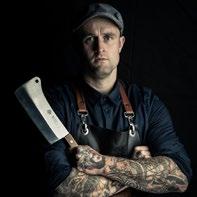
Crowned Butcher of the Year in 2020, to James Smith butchery is an art form. His career started sweeping floors and stacking chiller shelves, and over 14 years it progressed to travelling the world for competitions and working with some of NZ’s best chefs.
“As a butcher, I share an equal love for cooking and experimenting with flavours around meat. Over the years I have worked on progressing my cooking skills from simple trial and error and this is where my recipes and knowledge have grown to where they are today.”
www.thetatooedbutcher.com
anguspro.co.nz 19 THE REWARD









20 There is more to bulls than meets the eye. Top EBVs, Top Indexes, Top Bulls. SALE: Wednesday 31st May 2023 – 1pm on farm Selling 85 top R2 Angus Bulls Tim & Kelly Brittain 524 Paewhenua Rd, RD2, Otorohanga, 3972, New Zealand ph: +64 7 8732816 | mob: +64 275 935387 | www.storthoaks.co.nz | tim@storthoaks.co.nz Storth Oaks ANGUS
GENOMICS PROVE WORTH IN COW SELECTION

It is often said that beef cows are the hardest working, least loved animal on any farm, and The Wandle is no exception. We have high expectations of them; that they wean one calf a year, eat an endless amount of rank feed and don’t melt under pressure. This is the reality of our breeding and finishing operation, where we have many priority mobs, and the cows more often than not play a supporting role. My husband Gus and I manage this 2550ha farm at Middlemarch, under the umbrella of the Lone Star Farms group. Across the three Lone Star properties that have breeding cattle, the company has been taking steps to improve the genetic merit of the Angus cow herds, with 240 head here at The Wandle.
Lone Star Farms aims to target value-add red meat programmes and supplies beef into Alliance’s Handpicked and Angus programmes. It was clear from the outset, based on the rate at which prime cattle were hitting the marble scoring specifications, that work would need to be done to improve the breeding stock’s meat- and fat-related breeding values. The first step was obvious: buy bulls that have high breeding worths for IMF, ribeye area, fat thickness and growth. However, that alone only covers 50% of the genetic merit of their offspring – if we wanted to speed up progress, we needed to invest in evaluating and improving the genetics of the cows.

We undertook a genomic testing programme on all our existing black cows and heifers using Inherit SELECT. The resulting breeding values and Leachmann analysis values led us to form A and B herds, setting the initial minimum $Profit value at $9000 for a cow to be selected for the A herd. The base of the herd is varied, with the majority of cows having been bred off farm and brought in. In total, Lone Star has DNA tested more than 1000 cows and will continue to profile more than 350 heifer calves each year.
The table shows the gains being made in $Profit, which continues to be our primary selection tool, along with some individual breeding values and phenotypical assessment. We have started utilising Rissington genetics, whose involvement with the Leachmann system and targeting of IMF and feed conversion efficiency aligns well with Lone Star’s objectives.
The first crop of calves born to this new regime hit the ground in 2022, and so it will be another year before we see what influence the improved genetics has on steers and non-replacement heifers’ marble scores. However, we expect to start consistently achieving a marble score of 2 or higher with these animals, which would achieve an $0.80/kg premium ($1/kg for score >4). Currently, rising twoyear-olds (R2) are averaging a 2 score, meaning 50% of them are not reaping any premium above the $0.30 reward for being Angus. Caberfeidh, another Lone Star property, has been targeting sires with high IMF for several seasons longer than us, and are achieving 80% of R2s’ marble scoring 2 or higher, so we can be confident that these steps will pay off here.
Our aim for the cow herd is to become self-replacing, while also lifting total numbers to about 300 EBVs. Our sire team is now all Angus bulls with high $Profit and carcase BVs and are mated to both the A and B herds. We expect the B herd will improve at a similar rate to the A herd, and while we will prioritise selecting replacements from A heifer calves, we will continue to monitor the B heifer calves’ genetic merit as we need to, to build numbers.
Currently we are focused on using the slaughter results as our primary metric of improved genetics. It is unlikely we will see heavier weaning weights than have been achieved in the past. We now wean four weeks earlier, in mid-February, and plan to pull that forward even more by a week or two in future. This allows us to make better use of those cows and lift condition sooner in the animals that we need to. Average weaning weight this year was 180kg on February 21, while in 2022, weaning on March 1, the average weight was 200kg.
In future, an important aspect for selecting cows will be that they are fit for the system we run and meet their purpose within the system. We need cows that can get in calf as one-year-olds (at a minimum weight of 360kg), and get back in calf as a two-year-old. Dry second calvers are not given a second chance. Holding condition and being fit to graze our hill country is also important.
A crucial element to the success of these efforts is quality data collection. It is very important to gather accurate and reputable data at important times of the year, be sure that what we are collecting has a purpose and that we use that information to underpin our decision making.
anguspro.co.nz 21 VIEWPOINT
Age $Profit average IMF BV average MA cows $7,300 0.46 2019 born $7,400 0.48 2020 born $10,500 0.59 2021 born $12,200 0.66 2022 born $16,900 0.81
Words by Tara Dwyer, manager at The Wandle, Lone Star Farms
AN EFFICIENT PATH TO PROFITABILITY
It was a bold move for 24-year-old Will Wilding to ditch his job in Canada’s oil fields and move home to the family farm. He was tasked with taking on a different kind of black gold the fourlegged, fast growing and well-eating kind that roam the rugged hills of Te Mania in Conway Flat, North Canterbury.

Will was the stock manager back in 2014, working under the guidance of the late Lindsay Haugh. The stud was very similar then to what it looks like now, with a lot of technology and commercial farming practices in use, however Will’s innovative mind wouldn’t rest and he was determined to take things to a new level.
Te Mania is one of the oldest and largest studs in New Zealand, with more than 90 years of history, experience and innovation. The Wilding family and their cattle moved to Conway Flat in North Canterbury back in 1934 and it was Will’s grandfather Frank Wilding who set the herd on a path of high performance and productivity.
As the first herd in the country to weigh cattle on scales, record
animals with BREEDPLAN and mate yearling heifers back in the 1970s, breaking new ground is not unfamiliar territory. So when overseas investor Thomas Grothe came on board in November 2021 the team wasted no time getting to work on a new feed efficiency project.
Will says when Thomas first began discussions with the Wilding family, he was particularly interested to talk about improving feed efficiency, for both its economic and environmental benefits.
“I had heard about the reputation of Te Mania’s cattle and I wanted to be part of it. I wanted to enable them to take further steps with my financial backing,” Thomas says.
Will believes that methane is going to be the next big issue for farmers and there is research to show that dry matter intake and methane emissions are highly correlated at 0.83. Producing more beef with less feed will pay dividends to the industry’s bottom line, since it’s arguably the single most valuable trait in beef production.
THE BACKBONE 22
Words and images by Sarah Horrocks
One of the first partnerships that was forged when Thomas came on board was with Vytelle, a global precision livestock company focused on reshaping the industry and fast-forwarding genetic progress. Vytelle Sense is a research feed-pad technology that identifies the most efficient animals with an individual animal feed intake and weight-gain data-capture system. Animals are run through a feed pad in groups of 25‒-40 for 70 days while the Vytelle technology weighs their feed intake from the bins using EID ear tag technology and collects individual animal weights when they have a drink.
Vytelle claims that genetic selection for feed efficiency will reduce feed intake by up to 12%, reduce methane production by 30%, and improve profitability.
Thomas says, “If we can increase feed efficiency, and consequently decrease methane emissions, then I think we are taking farming in the right direction. These claims need to be proven and I’m willing to invest in trials to prove they are accurate.”
The research unit at Te Mania was finished by September 2022 and the yearling bulls were the first to cycle through it. Animal welfare is top priority, with pea gravel over a sand dune base and plenty of shade and shelter under established trees.
The bulls are divided into four pens from within each contemporary group and lucerne silage is fed in the feed bins. The raw phenotypic data collected is continuously monitored and collated by Vytelle in Canada and delivered back as an EPD (America’s version of an EBV). Ultimately this information
increases the accuracy of the net feed intake (NFI) EBVs available on Te Mania’s animals, and it also has wider industry good, as the NFI EBVs of related animals that are registered with Angus Australia are also improved for accuracy.

After the bulls have completed their time in the unit, the heifer calves will go through. This information is used alongside all other breeding tools to help select the highest performing females for flushing.
“If we can identify and breed from genetic profiles that are better for the environment, we can reduce our environmental footprint in a greater way,” Will says.
He says that embryo transplant (ET) will allow Te Mania to flush the most feed-efficient females in the herd, and after sourcing semen from the most feed-efficient sires they’ll be able to generate a refined bloodline that has reduced methane emissions, which will have appeal to the end consumer. The commercial farmer will be interested too of course, as the positive effect on profitability is a certainty. Vytelle claims that a 10% improvement in feed efficiency can lead to 43% improvement in profit.
As the newly named managing director of Te Mania, Will is not just focused on feed efficiency, but also on the unchanged core values of the stud. Maternal qualities are first and foremost – a cow that gets in calf every year, calves easily, rears that calf and then repeats this every year thereafter.
anguspro.co.nz 23
“ If we can identify and breed from genetic profiles that are better for the environment, we can reduce our environmental footprint in a greater way.”
Te Mania totals 2200ha and calves 550 mixed age cows (including 50 ET recipients), as well as putting 250 yearling heifers through artificial insemination (AI) annually. In fact, every female at Te Mania goes through AI except the two-year-old yearling heifers with calves at foot, who are run with the top end of the home-bred yearling bulls.
Mating yearling heifers is of high importance as a selection pressure,” says Will.
Everything is run in large contemporary mobs to keep commercial pressure on and keep results realistic in the commercial environment. The cows are out on the hills through winter and only brought down for calving to enable the team to collect birth weights.
“We try to run the same number of stock units here that a commercial farmer would.”
The only non-commercial feeding practice is when the sale bulls are supplemented with fodder beet after their 600 day weights are collected, since the market demands that the bulls are presented well for sale day.
“We want to ensure those 600 day weights are accurate in the commercial environment.”
All the young stock (250-odd heifers and 250-odd bulls) spend their first winter at One Tree Hill, a 900ha block purchased by Thomas in 2022 and leased back to Te Mania Livestock Ltd. The block is a mere 20 minutes away from the main farm and has capacity for an additional 600 commercial calves and 450 R2 steers. Ultimately Will wants to be buying these back from his clients, but this is proving difficult with the number required.

Steers are purchased in the spring and stay on One Tree Hill through the summer. They’re then brought down to Te Mania in March to be finished on grass, fodder beet and lucerne balage before being processed through Alliance’s Handpicked programme in June/July.
The steers killed in 2022 had mixed results according to Will.
“We noticed big differences in the trade steers.”
Animals bought in from his clients hit the $1 Handpicked premiums, with marble scores of up to +7. However, the steers that were bought in from elsewhere had mixed results, often hitting the weight grades but still only having marble scores of zero to +1 and therefore not meeting Handpicked’s targets.
“It’s frustrating when a beast is prime and up to weight, yet still not marbling.”
THE BACKBONE 24
Marbling is a trait that Will is starting to put more and more emphasis on, while maintaining the basic principles of the herd. In 2022 he used Lawsons Rocky within the AI programme and is excited to see the impact that his intramuscular fats will have on the Te Mania herd.
AI is done in November with follow-up bulls run until the first or second week of January - two cycles. Calving starts in August, with the heifers starting two weeks earlier than the MA cows, purely for ease of management.

Staff demands at this time of year are high and keep the team – a block manager and general at One Tree Hill and a stock manager and general at Te Mania -- pretty busy. Will oversees the entire farming operation and while Thomas spends only a few months of the year at Te Mania, he certainly isn’t afraid to get his hands dirty, often putting his hand up for some of the less desirable tasks.

anguspro.co.nz 25
“We want to ensure those 600 day weights are accurate in the commercial environment.”
Of course, as well as the 250 heifers born every year, there are the same number of bull calves. These are all taken through, with 40 bulls sold as yearlings in October and the cream of the crop retained to use as chaser bulls after AI.
“The yearling sale bulls are selected solely for heifer mating,” Will says.
The following June, 140 are catalogued for the two-year-old sale. Will is looking to increase the total number of bulls bred, but the excess will be sold by private contract sale, rather than increasing the number of bulls auctioned in June.
“The most consistent feedback we get is how balanced our EBVs are.”
While the bulls may not be at the top of the pile for marbling, growth or other individual EBV traits, they have excellent balance within the right traits. So, when their figures are combined, they come out with high selection index figures in the $PRO and $A index, which shows their high all-round balance and performance.
“As a catalogue average, we usually index in the top 10%.”
The Te Mania herd are genuine hill country cows, living in the hills for more time than they do on the flats.
“Our core philosophy hasn’t changed, but new technologies are allowing us to select and make breeding decisions on a whole new playing field,” Will says.

THE BACKBONE 26
“ The most consistent feedback we get is how balanced our EBVs are.”

MORE ANGUS CARCASES MEETING TARGETS FOR PREMIUM SUPPLY PROGRAMMES
Angus farmers are well placed to reap the benefits of premium supply offers, with increasing numbers of carcases achieving the required criteria, says Darren Drury, category beef manager for Alliance Group.
The co-operative offers a range of premium programmes that use internationally credible assessment systems to measure eating quality criteria that we know our exports markets will pay a price premium for.
“Angus has, over time, proved to be a very consistent breed for us,” says Darren.

Since Alliance established its Angus programme in 2021, the company has seen an improvement in the baseline of prime Angus steers coming through. Farmers are focusing more on developing the required attributes for premium programmes and becoming more adept at breeding animals that meet those targets, including high levels of marbling.
Darren says the work the sector has been doing to raise awareness about the importance of using estimated breeding values for carcase weight, growth, eye muscle area and marbling during bull selection is clearly paying off in terms of greater consistency for Angus cattle achieving the required criteria for Alliance’s premium programmes.
“We are seeing a definite uplift,” he says.
The Alliance livestock reps have a strong focus on connecting farmers with the appropriate experts who can provide advice on
approaches, such as what steps they can take if they want to improve marbling.
While New Zealand farmers and consumers may take for granted the fact that beef produced here is grass-fed and antibiotic- and growth hormone-free, Darren says it’s important to recognise that is a critical advantage in many global markets.
“It’s simply what Kiwi consumers expect, but in a lot of countries consumers are prepared to pay a premium for what we have here.”
Alliance is committed to building a differentiated premium portfolio and is providing farmers with supply programme opportunities to partner with for new products. This enables them to capture greater market value for those products.
“The premium programmes we have built have been based on consumer demand,” Darren says.
Modern consumers are increasingly interested in how their food has been produced. They have ethical and sustainability expectations so processors are shaping the programmes to meet this.
“That means that as well as consistency of quality, there has to be consistency of record keeping, an auditable trail of how the animal has been raised this highlights the importance of cattle arriving at plant with NAIT tags.”
THE REWARD 28
DON’T OVERLOOK WHAT
Our cowherd is stacked with dams sired by bulls that lead the Angus breed for fertility, performance and longevity. We balance phenotype, EBV’s and carcass traits without losing the strength of the Angus cow. Don’t overlook what really matters, and the reason the Angus cow excels above all other breeds.

Stokman Angus - Breeding cattle that are profitable in every segment of the industry - from conception to carcass.

All sale bullsl

29 anguspro.co.nz 2023 Bull Sales R2 and Autumn Born Angus bulls sell private treaty June 2023 - contact us for details Wed Sept 20th – 100 Top Yearling Bulls and 40 Heifers sell – 1 pm At the farm - 1708 Te Kopia Road, Waikite Valley, Rotorua Mark, Sherrie and Jake Stokman | RD1 Rotorua 3077 email: mtkiwi@farmside.co.nz Mark: 027 640 4028 Jake: 027 787 4008 Stokman Angus
HD50K
Carcass
tested l Fertility and semen tested l
Scanned l Parent verified
REALLY MATTERS…The
Cow!
Angus
Check us out on Stokmanangus.com or facebook: Stokman Angus Farm We are breed leaders in CalvingEase,GestationLength, combinedwithgrowth and carcass. - Stokman Solution S329, whose semen rights sold in 2022 to Mandayen Angus, Australia for $55,000 in 2022. Contact us for details. TACE CED GEST Birth Wt 200 Wt 400 Wt 600 Wt Mat Cow DTC Scrotal Carcass EMA IMF EBV +11.7 -11.3 +0.5 +56 +106 +130 +73 -6.6 +3.0 +78 +10.9 +3.2 !FLASH! Semen now available on NZ Yearling Record Setter, Stokman Solution S329
YARDS AHEAD IN EFFICIENCY AND SAFETY
Te Pari’s NZ Made galvanised steel yard systems harness natural cattle behaviour for greater safety and efficiency.



CATTLE YARDS

CATTLE CRUSHES
AUTO DRAFTERS

LOADING RAMPS
SCALE SYSTEMS
DOSING GUNS
Call us on 0800 837 274 or visit www.tepari.com
Take a look at our most popular yard plans on our website! TE PARI STEEL YARDS A selection of our most popular steel yard plans DESIGNED MANUFACTURED HERE. SOLUTIONS BETTER
Photo: Cattle Yards at Stokman Angus, Rotorua
STRUCTURAL SOUNDNESS
New Leg Angle EBVs
Leg Angle EBVs are now published for Angus animals recorded with Angus Australia, including all AngusPRO animals, complementing the existing Claw Set and Foot Angle EBVs.

Leg Angle EBVs (Leg) are estimates of genetic differences in rear leg structure when viewed from the side.
Leg Angle EBVs are calculated from a subjective assessment of rear leg structure and are expressed in score units. Lower Leg Angle EBVs indicate an animal is expected to produce progeny with, on average, a lower score for Leg Angle (i.e. straighter angle through the hock joint).
Leg Angus EBVs are calculated using a similar analytical model to the model used for Claw Set and Foot Angle, including:
• a single trait, linear model
• facility to incorporate breeder-assessed scores, along with scores collected by an accredited assessor
• facility to incorporate multiple scores for each animal
• facility to incorporate scores both on yearling animals and mature females
• facility to incorporate genomic information into the calculation of EBVs
• facility to only incorporate scores of 5‒9 in the calculation of EBVs.
In contrast to the Claw Set and Foot Angle EBVs, scores are only included in the calculation of Leg Angle EBVs for animals recorded with Angus Australia. Leg Angle EBVs are not published for animals recorded with the American or Canadian Angus associations.

anguspro.co.nz THE SCIENCE 31
While many producers have successfully managed the structural soundness of their animals using different selection strategies, such as culling of animals with unacceptable structure, Claw Set, Foot Angle and Leg Angle EBVs provide a useful tool that breeders can use in association with existing management and culling strategies to further improve the foot and leg structure of their animals.

Claw Set, Foot Angle and Leg Angle EBVs have several major benefits when used in association with traditional selection strategies.

• Like all traits of economic importance, the foot and leg structure of an animal is a combination of the genetics it has inherited from its sire and dam, and a range of non-genetic effects. Claw Set, Foot Angle and Leg Angle EBVs take any differences in non-genetic effects into account and focus on the genetic differences between animals.
• The Claw Set, Foot Angle and Leg Angle EBVs calculated for an animal take into consideration not only the foot structure and leg angle of the individual animal, but also that of all its relatives. In this manner, the Claw Set, Foot Angle and Leg Angle EBVs provide a better indication of an animal’s genetics for foot structure and leg angle than an assessment of the animal for structure alone.
Claw Set, Foot Angle and Leg Angle EBVs allow for genetic differences to be identified between animals that themselves may have acceptable foot structure or leg angle. Animals that have acceptable structure but are likely to produce a high percentage of progeny with poor structure can be removed from the breeding herd, or conversely, if two animals of similar genetic merit for other traits are being compared for use within a breeding program, the animal that is likely to produce a higher percentage of progeny with superior foot structure and leg angle can be selected.
Calculating Structural Soundness EBVs
While not applicable for Leg Angle EBVs, the Claw Set and Foot Angle EBVs published by Angus Australia are calculated in an international Angus genetic evaluation where structural score information on Angus animals born in New Zealand, Australia, the United States and Canada is combined to calculate a single EBV.
The EBVs are calculated based on more than 100,000 structural scores that have been collected across the four countries on both yearlings and mature cows, with animals scored multiple times during their lives. In addition to structural scores, genomic (or DNA) information is also incorporated into the genetic evaluation, adding considerable accuracy to the EBVs that are published.
A unique feature of the EBVs published on AngusPRO animals is that they can be directly compared with the breeding values published on Angus animals in Australia, the United States and Canada, enabling the genetics of AngusPRO animals for structural soundness to be benchmarked within the international Angus gene pool.

THE SCIENCE 32
Claw set
Foot angle

EASY CARE, MAXIMUM RETURNS
 Words
Words
COMMERCIAL GAINS 34
and Images by Sarah Horrocks
Farming is a relaxed way of life for Apiti couple Nipper and Sheree Knight. Their partnership encompasses a 35ha ex-dairy run-off and a 70ha flat-to-medium hill country block, giving them 101ha effective for their sheep and beef operation, set near the foot of the Ruahine Range in Manawatu.

If it wasn’t for doing their own shearing to save costs, the sheep would almost look after themselves, Nipper says. There are 280 five-year Coopworth ewes bought in during February or March every year, and these are put to a Suftex terminal ram on 1 April. They scan at about 200% and docked 177% in 2022, with the first cut of lambs coming straight off mum in mid-late December.
“These were drafted by eye and averaged 19.8kg carcase weight,” says Nipper.
All lambs are finished on farm and processed at Taylor Preston, so at post-weaning Nipper ensures they weigh everything to a minimum of 40kg liveweight, to achieve a 19kg carcase. In the 2021-2022 season they were paid an average of $156 for every lamb on the place.
The sheep are run at a lower ratio than the Angus cattle — the
twinkle in Nipper and Sheree’s eyes. This low ratio enables a low worm burden across the farming system, so the ewes are capsuled prior to lambing and the lambs are drenched in November and January only.
Angus working well Nipper and Sheree fell into Angus because there were already 25 on the hill country block when they purchased it in 2011. This number has steadily increased to 106 females, but Nipper would like to see this rise to 120 in coming years.
“Angus seemed to work well here and fetched good premiums, so we stuck with them,” he says.
Until 2022, Nipper and Sheree had been finishing all progeny themselves, wintering 80 cows, 80 weaners and 40 rising twoyear-old steers. Once finished, the steers were sold as store stock at Feilding Sale Yards.
“The market is nuts around September, so we were getting more money at store than killing them ourselves.”
anguspro.co.nz 35
In October that money was $3.82/kg for the smaller 470-500kg steers, and the 580kg top line that went a month earlier fetched $3.50/kg.
“We were once told that the most profitable animals are the ones who spend the least amount of time on the farm.”
For this reason, and after losing their 21-year-old daughter Ashleigh in a tragic accident at the end of 2021, the Knights decided to take the stress out of feeding weaners through the winter months and simplify their system. In 2022 all steers were sold as weaners to a local, and with the 12-month-old mob’s average weight at 426kg, they’re proving their genetic potential.
“That mob is absolutely honking,” Nipper says.
They’re not fed anything special - it’s a straight grass programme across the entire operation, so Nipper puts their performance down to the Totaranui bulls he’s buying, as well as his strict female selection process.
“If a calf is no good at the end of the season, the mother is down the road.”
The first Totaranui bull was purchased in 2013 and the Knights have purchased another one almost every year since. They always buy yearling bulls with low 1.5‒-2.5 birthweight EBVs and high growth rates - the illusive curve benders.
The yearling bulls are necessary for heifer mating and Nipper calved 30 heifers as two year olds in 2022. They were completely unattended down at the run-off block and there were no issues at all.
“We feed the heifers as much as the cows, and also right through the pre-calving period.”

The abundant feed ensures the heifers are up to weight for mating, can easily rear their calves and then get back in-calf as two year olds. Nipper believes not mating yearling heifers is simply a lost revenue opportunity.
“Our re-conception rate is 100% and we don’t have any tricks except feeding them well and selecting the right bulls.”
The current calving period is spread over nine weeks, but Nipper is going to shorten that to find the fertility and then cull any latecycling mixed-age cows.
“Fertility is in the genetics.”
As well as fertility, docility is a big part of Nipper’s bull selection process and he says that if he can’t walk up to a bull up to inspect its feet and have a good look at the animal on sale day, he’s not interested.
COMMERCIAL GAINS 36
“A quiet calf grows well and is easy to deal with.”
Having plentiful feed assists in progeny growth too, of course, and selling all the weaner steers has freed up a lot of pasture for the females. The annual rainfall at Apiti is 1600mm/year and they’re considered summer safe, however 40ha is baled into 400-‒600 rounds every year to keep for winter, and to use if there’s a drought.
The soil fertility is good, with the farm having not missed fertiliser for 62 years. Olsen P levels are 25-‒30 and the pH is 5.9-‒6.0, so in the spring Nipper puts DAP on at 130kg/ha, as well as sulphur at 30kg/ha. In autumn, urea goes on at 70kg/ha, and muriate of potash at 60kg/ha, to replace the mown grass.
“Last autumn I put on 100kg of high analysis SuperPlus, which is 9.5% phosphorus.”
Nipper and Sheree also run a local contracting business, which means they cut, rake, bale and wrap 5000+ bales annually, depending on the season. Between the contracting work and the cattle breeding, they are not short of work throughout the year.
People often ask why they don’t make things easy and just buy in trade steers.

Sheree says the reason they choose not to is for the added satisfaction they get when they see the results of their own breeding and selection programme. She and Nipper find the results are far more rewarding.
Although the farming year is relatively simple, Nipper and Sheree aren’t ready to rest on their laurels just yet. Nipper is the first to admit that they don’t run a very technical farming system, however their emphasis on quality genetics has ensured the progeny coming off the farm grow at rates beyond belief. This is something they are very proud of, and rightly should be.
anguspro.co.nz 37
“Our re-conception rate is 100% and we don’t have any tricks except feeding them well and selecting the right bulls.”
BAN ON LIVE EXPORTS COMES AT CONSIDERABLE COST
A ban on the export of livestock by sea will come into effect at the end of April 2023 at significant economic and logistical cost to farmers, the industry and wider economy.
Alex Feng, from Gisborne-based livestock exporting company BeefGen, says according to a ‘Wellbeing Analysis on the Ban on Livestock Exports’ by Infometrics, a ban on the live export trade by sea will cost the New Zealand economy $470m, and farmers who export stock, between $49,000 and $116,000 a year (figures analysed by Livestock Export New Zealand Association).

Mr Feng says the live export trade gave NZ farmers the opportunity to capture a premium for surplus high genetic worth animals and importantly, it took a number of animals out of the processor supply chain every year.
Mr Feng says processors are already operating at capacity and farmers that might have typically sold animals for live export will need to free up space on their farms for extra mouths. He believes this will have a flow-on impact and increase the number of bobby calves sent to slaughter.
“Without the live export trade, it’s estimated that a significant number of additional bobby calves will be sent for processing.”
NZ and Australia combined had an 80% share of the live export trade into China, with South American countries making up the balance. NZ exiting the trade opens up opportunities for Australia and South America to capture more of the market share while denying NZ farmers a source of income.
“Live export could always guarantee farmers a premium price,” says Mr Feng.
According to MPI statistics, NZ exported a record 124,738 cattle to China last year. The majority of these were dairy heifers, but a big percentage were beef breeding animals.
While criticism has been levelled at the live export industry for poor animal welfare standards, Mr Feng says BeefGen has an extremely good animal welfare record and out of 22,738 cattle exported over five consignments, there have only been seven deaths during the 16-to-20-day voyages.
COMMERCIAL GAINS 38
Words by Sandra Taylor
“We have the best practice standards of anywhere in the world and this mortality rate is lower than what would be found in any farm system with that number of cattle.”
He says BeefGen only selected the best vessels for livestock transport and out of the 20-30 available for the purpose in this region, only 10 met BeefGen’s standards.
“These are purpose built with very good ventilation and a good water supply system.”
The company purchased top quality pelletised cattle feed from Australia to feed the animals during the journey and stock were looked after on board by a vet and one stockman for every 1400 animals.
The number of animals being transported at any one time ranged from 3000 to 10,000 depending on the size of the vessel. Cattle for live export were sourced from all over NZ. They were tested on farm to ensure they were healthy before being transported to a quarantine farm where they stayed for a minimum of 30 days. At the quarantine farm they were subject to multiple tests and treatments to ensure they were in optimal health before undertaking the journey.
Seven to 10 days before departure they were transitioned onto the pelletised feed.
BeefGen boats departed from Napier Port and docked at various ports in China, depending on where the cattle were going.
Mr Feng says most of the cattle exported weighed around 250kg.
“These are ideal for live export.”
Typically, they were second-tier animals from a breeding worth point of view, or surplus toptier heifers. These animals were highly valued by the Chinese livestock industry.
The heifers were exported for use in China’s genomic breeding programmes, using genetics from the USA and Canada.

Mr Feng says beef heifers from Australia and New Zealand were particularly sought after for these breeding programmes, with the male offspring going into feedlots for prime beef production. The majority of beef heifers sold in China were Angus, but Simmental was the most popular beef breed, particularly for smaller family farms and would fetch a premium.
As breeding animals, they would spend most of their life indoors with the Chinese cut and carry feed systems but would have access to outdoor areas.
While the ban on live exports only came into effect on April 30, Mr Feng says the industry had already collapsed in NZ with the loss of jobs.
He says while BeefGen will continue to export a small number of very high genetic value sheep and cattle by air, this is a tiny and very niche market.
The company has been working closely with the Livestock Export Association to set up gold standard — best practice live export standards — which offer full transparency to the public. These will be presented to the future government in the hope that the ban will be overturned.
anguspro.co.nz 39
“We have the best practice standards of anywhere in the world and this mortality rate is lower than what would be found in any farm system with that number of cattle.”
INTRODUCTION TO ANGUS.TECH
Angus Australia have developed a YouTube video to assist New Zealand’s Angus breeders and AngusPRO clients with using their angus.tech database search tools.

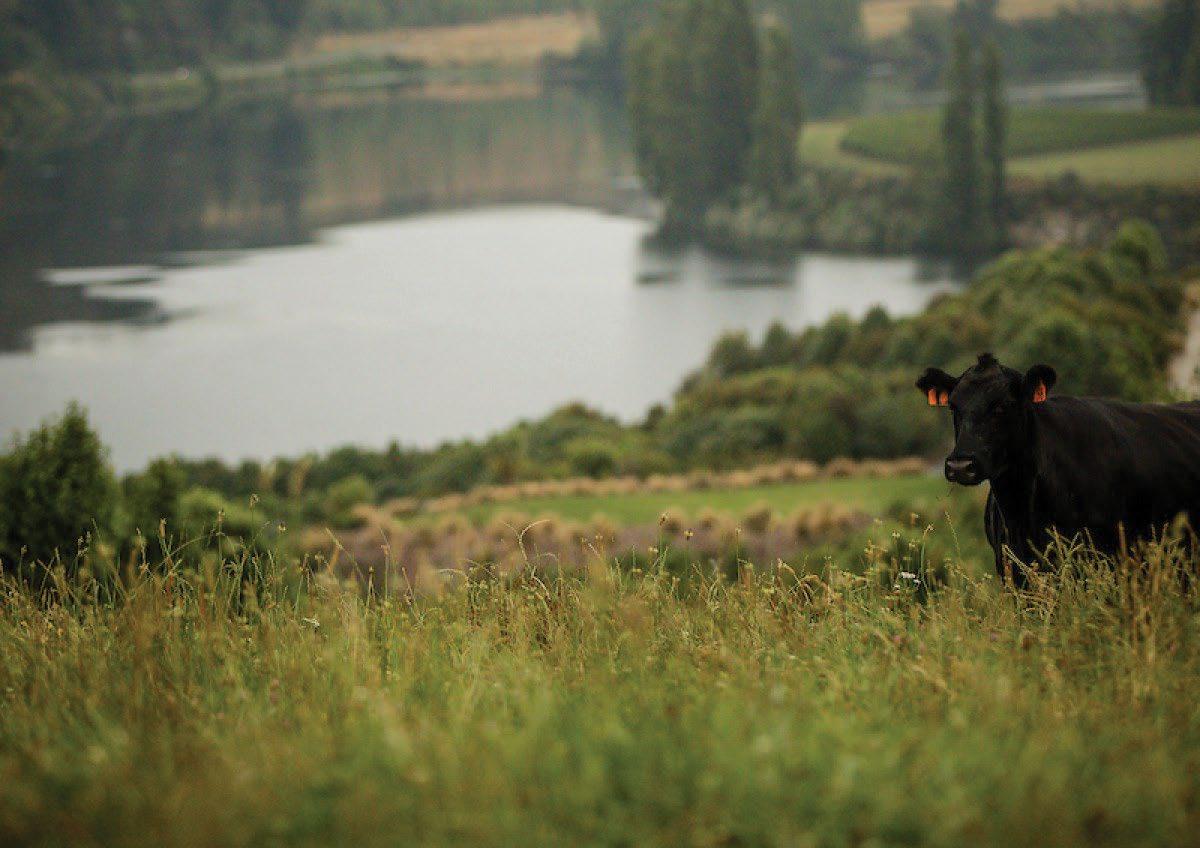
As we lead into the bull sale season, this video is not to be missed by anyone wanting to quickly and easily get up to speed with using the features of the database. Topics include:
• Registering to use angus.tech

• Finding animals in Angus database search
• Searching within sale catalogues
• And many more of the great features of the Angus Australia database.
SALE BULLS SIRED BY:
• MILWILLAH NAPA N498
• SAV RAINFALL 6846
• GB FIREBALL 672
• RANUI CAPITALIST 905
• HEATHER DELL ATTRACTIVE P20
• TAKAPOTO 15/167
• TAKAPOTO 17/11
• TAKAPOTO LOCH UP 18/58
Visitors always welcome. For all
8th Annual Yearling Bull Sale FRIDAY 22 ND SEPTEMBER 2023 1:00 PM AT 43 FINLAY ROAD, CAMBRIDGE viewing of bulls from 11:00 AM
enquiries,
Sam
M: 027 474 9989 E: sam@takapoto.co.nz Multiple Trait Selection • HD50K DNA profiled • C10 TB Status and BVD Vax and Tested Suitable for heifer and cow mating • Fertility Tested • All Bulls Guaranteed Follow Takapoto Angus on Facebook www.takapoto.co.nz
contact:
LeCren
“
JustBetterBeef”
Scan here
THE STOCK AGENT’S TOOLKIT

FOR PRE-GAME DISCUSSION AND PLANNING
Words by Jake Phillips, Angus Australia extension manager
The Stock Agent’s Toolkit has been designed for stock agents across Australia and New Zealand as a clear, simple, and effective place to learn to interpret and understand the evolving amount of information available when considering purchasing registered Angus bulls.

Although the module is designed for stock agents, the messages and content also relate to many seedstock and commercial Angus breeders and the benefits of using the content as a discussion point in planning for the upcoming breeding season will be long lasting for the supply chain.
Stock agents play a critical role in the transaction of information and decision making between the seedstock producer and the commercial breeder, so with this in mind a series of eight short videos and summarised written content have been developed. The video content supplements the traditional written content by allowing a variety of learning styles to take advantage of the content.
The Stock Agent’s Toolkit includes key components such as:
• The role genetics plays in my client’s herd?
• Interpreting and understanding the information in Angus sale catalogues
• What tools are available to identify the right genetics for my client?
• DNA – parent verification, genomics and genetic conditions
• What do you need to do before starting to look at bulls?
• How do I find bulls to suit my client’s needs?
• Why is focusing on genetics a worthwhile exercise?
• Selecting your next Angus bull
Each of the eight modules were born out of discussion with leading stock agents in the industry, helping to identify the key areas where agents and clients could conduct some pre-purchase discussions and planning to ensure the sires being evaluated met the client’s breeding objective and were going to contribute the most amount of genetic gain in the traits of importance first.
What role do genetics play in your client’s herd?
The performance of a bull is largely influenced by the genetics and the environment. The way a bull presents on sale day is often a reflection of the environment it has been raised in up until that point. Utilising breeding decision tools will give a more accurate indication of the animals true breeding value - tools such as EBVs should be considered, to assist in making informed decisions regarding sire selection.
anguspro.co.nz THE SCIENCE 41
Angus sale catalogues
With more and more information on animals and their breeding values becoming available, it is important to be able to understand and interpret the information that is presented in a sale catalogue.
Tools available for making genetics decisions
Estimated breeding values (EBVs) are a tool to predict an animal’s true breeding value which is defined as its genetic merit for each trait.
DNA – Parent verification, genomic and genetic conditions
DNA technology is being routinely used to provide a quality assurance step in verifying recorded pedigrees, for genomic evaluation and inclusion into the TACE analysis to provide more information on the genes it’s carrying earlier in the animal’s life and with greater comparison, and for testing of the nine genetic conditions monitored by Angus Australia.
What do you need to do before starting to look at bulls?
There are a few simple steps to help find the right bull for clients; define the target market, review the available selection indexes and define the breeding objective. You can then identify a suitable seedstock producer who produces bulls that meet your client’s breeding objective and have been raised in a way that will work in your client’s environment.

How do I find bulls to suit my client’s needs?
Angus Australia has searching capabilities through Angus SELECT on the Angus Australia website. Angus SELECT helps find animals for sale or who have genetics for sale, which can be searched across catalogues listed with Angus Australia. By registering (no cost involved) to use Angus SELECT you will get access to the full amount of information available on each animal.







Why is focusing on genetics a worthwhile exercise?
The Angus Sire Benchmarking Program (ASBP) has demonstrated that there is great potential to achieve genetic improvement in Angus breeding programs by utilising selection tools, such as estimated breeding values (EBVs) and selection indexes.

Selecting your next Angus bull
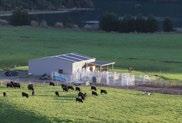
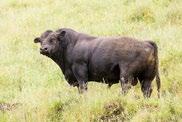

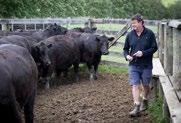
Choosing your bull is an important task, with many things to think about before you make your selections. Whether you are selecting bulls from an auction, a private sale, or from within your own breeding program, there are a number of things to consider. A single bull’s genetic influence has the potential to significantly impact the future direction of your herd, so it is important to choose wisely.
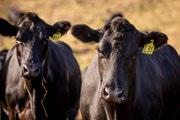
THE SCIENCE 42
THE RISKS ARE LESS RISKY WHEN WE’RE PART OF THE PICTURE.
Moving ahead means making changes. And that usually comes with a few risks along the way. But with us as your partner, you can progress with more confidence. That’s because FMG offers the kind of specialised advice and knowledge that only comes from working alongside rural New Zealand for generations. To find out more, ask around about us. Better still, give us a call on 0800 366 466 or go to fmg.co.nz. FMG, your partners in progress.

We’re here for the good of the country.

Monday 12th June, 3PM
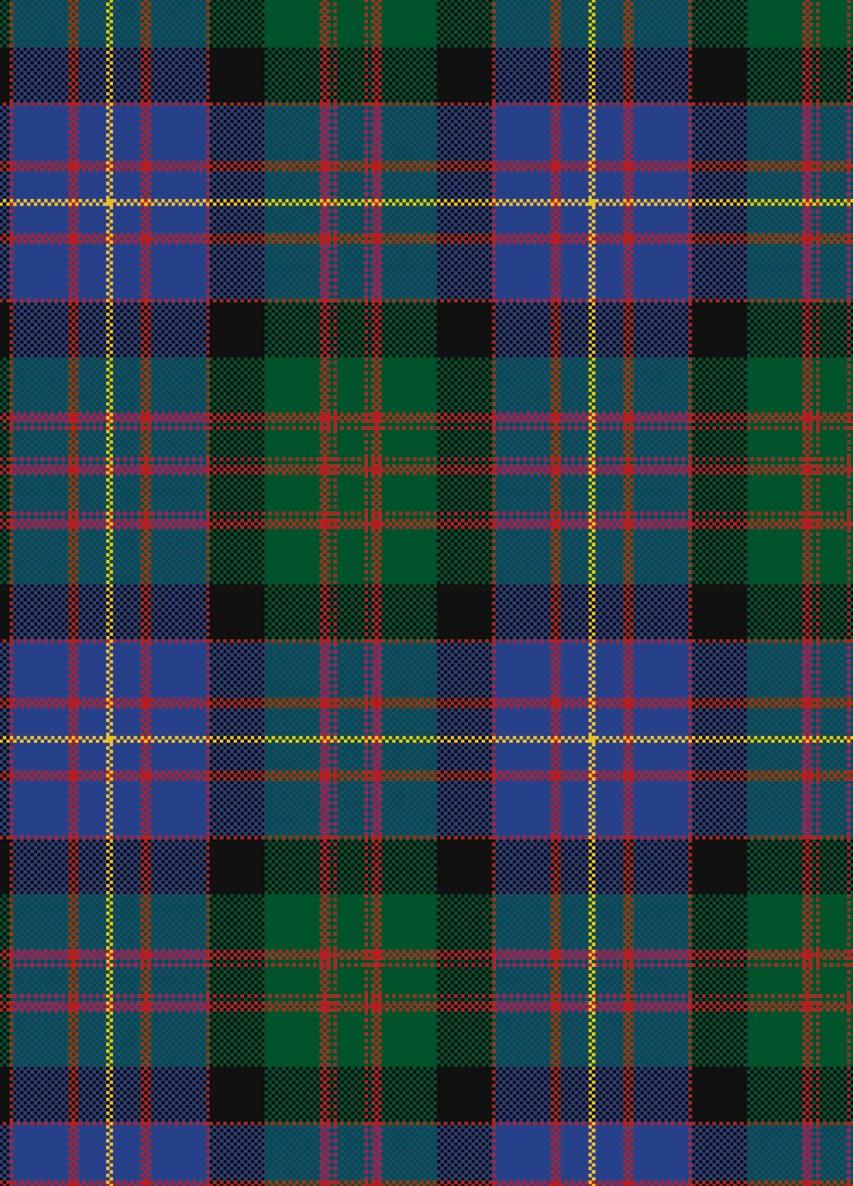
Meet and exceed all present and future beef quality standards excelling in EMA IMF and carcass yield
The Cameron Clan would like to invite you to their annual and Venue: Ngāputahi Station, access via Pohangina Road only
OUR TEAM
Nancy Crawshaw has recently been appointed to the role of extension officer with Angus Australia and will relocate to the North Island in Spring of 2023. Nancy developed a passion for agriculture and genetics while growing up on her parents’ sheep, beef, and Angus stud property in Nuhaka, northern Hawkes Bay.
At University, Nancy pursued a career in agricultural science and developed a passion for meat science through her study abroad program in the United States of America, which led to a five year graduate and management position with one of Australia’s largest beef processing companies.
Nancy is passionate about the role genetics and the environment play in producing a high-quality product for the end consumer.
The member engagement team, to which Nancy has been appointed, focuses much of their time to working with members to reach a better understanding of the breeding and genetic
selection decision, making tools available as well as other educational opportunities for members to learn more about the beef industry.

Extension officers provide individual consultation, group workshops and webinars, as well as an expansive portfolio of educational resources. The member engagement area of Angus Australia also manages the Angus Youth programme, an expansive offering of scholarships, awards, bursaries and leadership programs for its members.
Angus Australia extension manager Jake Phillips says he is delighted to have someone of Nancy’s capability join Angus Australia.
“Nancy displays all of the values we look for in a staff member but also brings a wealth of knowledge in meat processing and management, as well as important experience in beef farming, genetics and breeding.” says Jake.
Nancy also has an intricate knowledge of the New Zealand beef production systems which adds great value to AngusPRO members and their clients. She will be a key point of contact for extension related activities throughout New South Wales, Tasmania and New Zealand.
nancy.crawshaw@angusaustalia.com.au
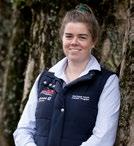
or +61 2 6773 4643
MONEY FOR MARBLING
Words and images by Sarah Horrocks
Te Pa Station represents a single cog in a wheel that is one of Aotearoa’s largest farming operations, the Maori-owned Atihau Whanganui Corporation. That wheel is responsible for about 70,000 sheep, 4000 beef cows, 700 dairy cows, 3000 beehives and 728 hectares of woodlots on an area totalling 44,000 hectares.
Jimmy Doolan is manager at Te Pa, which is 4200ha of effective sheep and cattle country. Big enough to give him some power of persuasion in the processing marketplace and big enough to keep him “bloody busy”.
There are three stations within Te Pa — Pah Hill, Omerei and Ngapuke.
“They’re all complementary and we’re a closed unit,” Jimmy says.
The elevation of the three stations varies from 700m above sea level at Pah Hill down to 400m on the kinder country at Ngapuke, allowing Te Pa to finish all its own progeny and reap the benefits of the genetics being utilised at the head of the sheep and cattle programmes.
The straight Angus herd of 1200 females is run at a ratio of 35:65 with the 17,000 Romney ewes (wintering 42,000 SU), and top genetics are sourced both for the sheep and cattle.

COMMERCIAL GAINS 46
When Jimmy came on as manager in 2019 the cow herd was old and low performing, so he knew he had to make drastic changes and rebuild the herd with fresh, high-performance genetics.
“I’m keeping all my heifers during the rebuild phase,” he says.
The bulls used in the main herd are sourced from Ranui Angus in Kai Iwi, Totaranui in Pahiatua and Whangara in Gisborne. The first item in selection criteria is that they must be high in IMF.
“We won’t buy a bull under +2 for IMF.”
Also in the mix during the bull selection process are eye muscle area and birthweight, as well as ensuring the 600-day weight is above breed average and yet still below the mature cow weight.
“We run a moderate sized cow herd, for efficiency.”

Yearling bulls are purchased to put over the yearling heifers and
these also come from Ranui, where Jimmy looks for a smooth shoulder and good growth rates.
He says the need for low birthweight EBV bulls is essential in their heifer programme and 250 heifers are retained every year as replacements. Of these, Jimmy usually gets 200 in calf. Their calves are identified by their 001‒-200 tag numbers and these are then easily identified as being sired by low birthweight bulls as they’re spread out across the farm.
“Throughout the year you can’t pick them out from the other calves. They catch up and grow out just like the rest of them.”
The top 40 heifers that are not in calf are retained and given a second chance as two year olds, with the remainder sold in local trade. After that there are no second chances for not getting in calf and raising that calf.
anguspro.co.nz 47
The mixed-age herd of 950 cows goes to the bull in midDecember, with the bull out for two cycles.
The bull selection process is all part of the bigger picture for Jimmy, since he’s growing out and finishing all his own progeny.
Cattle are primarily processed through the AngusPure Special Reserve export programme at Wilson Hellaby in Auckland. Atihau as a whole supplies 85% of all cattle processed through the programme and Te Pa’s cattle hit the grading specifications 100% of the time.

Marbling and docility are the two main factors that Jimmy keeps close watch on, and with minimum marbling targets of +2 within a strictly grass-fed programme, genetics must come into play.
“Our bull selection is improving our meat quality all the time.”
Jimmy says that docility in his cattle is a big part of farming and while this obviously means the cattle remain calm and quiet in nature, more importantly, it keeps the pH of the meat down.
“Most of the cattle run to us rather than away from us when we go into a paddock.”
By selling to Wilson Hellaby in a year-round supply agreement, Jimmy has guaranteed space which provides the security of
knowing he can always get his cattle away.
At Te Pa they’re killing from 20 months of age and, in the lead up to this, everything is weighed into groups, with the heavier mobs being weighed every 10 days until they hit 620kg liveweight.
However, weights are not the final ticket, as Jimmy is fanatical about ensuring every animal that goes on the truck is properly finished.
“I won’t let a beast go if it’s not full in the brisket.”
The processing carcase weight average is 330kg and while it’s a straight grass farming system, the marble scores are consistently delivering what the consumer in America demands.
“Predominantly the cattle are scoring +3 for marbling, with the odd +2 thrown in.”
Grass quality and feed management are crucial, so Jimmy ensures it’s predominantly a clover base to maximise feed within a five-year re-grassing policy.
“We put in about 90 hectares every year.”
Wilson Hellaby sets a monthly schedule price for the AngusPure Special Reserve programme, which gives Atihau some certainty
COMMERCIAL GAINS 48
“Predominantly the cattle are scoring +3 for marbling, with the odd +2 thrown in.”
with price. Over January and February the schedule was $6.25/ kg and though this may be slightly back on the premiums offered by the top tier of Alliance’s Handpicked programme, the price is there for all animals achieving +2 for marbling, rather than +4 at Alliance.
“We have a really good relationship and strong loyalty to Hellaby,” Jimmy says.
Lamb for dinner
The sheep programme is finely tuned too, of course, with Hildreth Romney rams put over the main flock of 12,000 ewes on April 1. The 5000 one-year ewes are put to a terminal Suftex X Southdown ram on February 1, enabling Jimmy to get about 3000 lambs away before Christmas.
The total number of lambs killed sits at about 20,000, while another 5000 are kept as replacements, and matching the policy he adopts with the young heifers, Jimmy also puts 85% of the hoggets to the ram.


All lambs are processed at Ovation, averaging 18kg carcase weight, and while Jimmy drafts by eye in the first instance, he does run everything that’s going on the truck over the scales first.
“I don’t like any surprises.”
anguspro.co.nz 49 49
“We have a really good relationship and strong loyalty to Hellaby.”
As manager, Jimmy oversees the entire farming operation himself, but he’s not Superman and therefore relies heavily on his staff. Second in charge is Wesley Johnstone, who keeps close watch over the genetics side of things, including sire choices within the sheep and cattle breeding programmes.

All three blocks house a shepherd general and they work alongside three cadets, who are enrolled in a Primary ITO course, undertaking three years of education and skills development while living on site at Pah Hill.
Generations of Māori wisdom and tradition encompass daily life at Te Pa, with technology and science weaving their way in to ensure the longevity and profitability of the farming business.
Jimmy Doolan takes each day as it comes — that’s just in his nature — but those days are just getting better and better.



ATTENTION FARMERS

Wilson Hellaby Ltd, as proud partners of New Zealand AngusPure, require Prime Angus Steer and Heifer supply 52 weeks of the year to meet our strong domestic and export market demand.
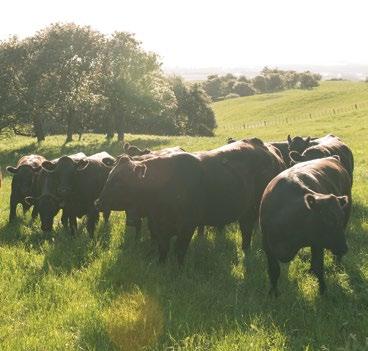
















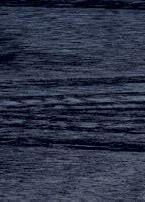
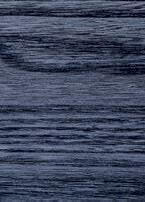




For further information on competitive weekly pricing and applicable Angus premiums, please contact the Wilson Hellaby Livestock Team on 0800 856 910 or email livestock-info@hellaby.co.nz

COMMERCIAL GAINS 50
A NEW BREED.
Whilst some studs like the sound of their own name and talk about their business, we’re more interested in growing yours.
When others are dining on their reputation, we’re hard at work earning ours. We continue to make significant investments in top genetics from across the globe so we can provide you with the best outcomes for your operation.
Need the proof? Recently we purchased Twin Oaks R020 and Waitangi R257. Waitangi R257 has since been selected for the Angus Australia progeny test (one of only two NZ bulls) and the Beef and Lamb genetics progeny test.
We are a new name in Angus breeding. And whilst names are important, we prefer numbers that look forward rather than back.
If you want bulls bred for the future with sound structure and proven performance backed by impeccable data then give us a call. We’d love to talk about how we can help you.
WHANGARA ANGUS BULL SALE
TUESDAY 27 JUNE AT 12PM

THE EASY REPRODUCTION METHOD
Vytelle ADVANCE hormone-free IVF (in vitro fertilisation) is the most accessible reproductive method available. Our process removes the need for follicle stimulation hormone (FSH) injections prior to an Ovum Pick-Up (OPU). Vytelle’s proprietary media does the work of FSH, which alleviates upfront costs and ends additional trips through the chute. The process is easy on the donor and simple for you.
How It Works
Our process is as easy as 1,2,3. All you need to do is bring the cow.
1. Vytelle technicians will perform the OPU on each donor. This process extracts the oocytes (unfertilised embryos) from the ovaries.
2. The oocytes are transported to the Vytelle lab and fertilised with the semen of your choice.
3. Grade 1 embryos are frozen or transferred fresh. Not only is our process simple, but so is our cost structure. Our outcomebased pricing ensures you only pay for quality embryos. There are no hidden fees or upfront costs; simply one price per grade 1 embryo produced.
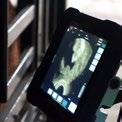
The Advantages of Hormone-Free IVF IVF allows you to multiply genetics from elite-performing animals without the use of hormones. The ability to create a variety of matings enables producers to maximise their genetic gain, even while the donor cow remains in production. Oocytes can be taken from heifers as young as six months, cows that are open or pregnant up to 100 days in gestation.

Vytelle utilises the Direct Thaw (DT) method for frozen embryos to remove unnecessary embryo handling and improve transferring efficiency. By freezing only grade 1 embryos, this ensures a reliable and successful pregnancy rate. The DT method enables embryos to be eligible for export as well.
We Are Here!
Last year, Vytelle opened our own NZ lab, based in Hamilton, to support the growing demand for hormone-free IVF. With demonstrated outstanding results in NZ, our schedule is quickly filling with on-farm collections as we approach the breeding season. Schedule your OPU today.
Visit Vytelle.com or contact our local New Zealand sales manager Ben Burgess at ben.burgess@vytelle.com or +64 21 288 4190
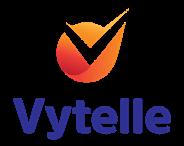
ADVANTAGES OF HORMONE-FREE IVF
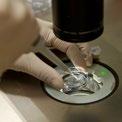
+ Easier on the donors
+ Less labour
+ More cost effective
+ Same number of oocytes collected per OPU
+ Grade 1 embryos
OUTCOME-BASED PRICING
Our outcome-based pricing structure ensures you only pay for quality embryos. There are no hidden fees or upfront costs; simply one price per grade 1 embryo produced. Visit our website at vytelle.com to learn more.
Scan to open on your phone.

COMMERCIAL GAINS 52
Structurally sound cattle that S T A N D T H E T E S T O F T I M E .
ANGUS APP
The Angus app is a cross-platform mobile application for iOS and Android devices, developed by Angus Australia, to support the angus.tech suite of software. The app allows users to instantly access detailed information about registered Angus animals, drawing on information from the Angus Australia database. The simplistic design of the Angus app ensures Angus breeders are able to quickly bring up information on individual animals using their mobile device, with users able to access a number of different services, outlined below.
Sale and Semen Catalogues
Users can access currently listed sale or semen catalogues, enabling Angus breeders to view information regarding the registered Angus animals that are either currently available for sale or have semen available for purchase, and identify those animals that are most aligned with their breeding goals and objectives.



Animal & Member Lookup
The Angus app allows Angus breeders to access the Angus Australia database to find information on registered Angus animals or members of Angus Australia. Users can search for individual animals, with either their Animal ID or Animal name, and view information such as basic details, pedigree, EBV information, the EBV chart, as well as photos of the animal.

anguspro.co.nz
W W W . R A N U I A N G U S . C O . N Z O P E N D A Y : 1 6 / 5 / 2 3 2 Y E A R B U L L S A L E : 8 / 6 / 2 3 Y E A R L I N G B U L L & H E I F E R S A L E : 2 8 / 9 / 2 3 53
DON’T BE QUIET ABOUT DOCILITY
Words by Jake Phillips, Angus Australia extension manager
During the recent Trans-Tasman Angus Cattle Evaluation (TACE), a number of significant enhancements were made to the calculation of Estimated Breeding Values (EBVs), including the ability to calculate Docility EBVs on more than 60% more animals than had previously been available.
This enhancement has thrown docility into the spotlight of commercial bull buyers’ decision making by providing an EBV to assist in objectifying the process for animals that may not have previously had the EBV available. What Docility EBVs indicate and the way breeders should use the EBV have not changed. Docility EBVs are estimates of genetic differences in temperament between animals.
Docility EBVs are calculated from a subjective assessment of temperament when animals are between 60 to 400 days old and are expressed in percentage units. Higher Docility EBVs indicate an animal is expected to produce a higher percentage of progeny with acceptable temperament.
Docility is an important trait, and this significance was highlighted in a recent survey of more than 1200 beef producers across Australia, which found temperament was the most important trait when selecting a bull (Australian Beef Breeding Insights, 2019).
Docility is a trait that can at times also be considered a pass or fail in phenotype expression, meaning so long as the animal does not behave poorly, it is often deemed acceptable. However, relying solely on the individual’s own display of docility, particularly in older animals that may become conditioned to handling over time, is fundamentally flawed when considering the effect of the trait on the progeny. For example, a bull
that has been prepared for a show or has become accustomed to handling from a young age may present with an acceptable and calm temperament, but this is a reflection of good management and should not be confused with the docility that will be inherited by his progeny.
The expectation of the commercial supply chain is that animals will be able to adapt quickly to new environments and overcome stress, returning to their normal state of behaviour as quickly as possible. Often this ability to perform can be demonstrated by the results achieved while growing and finishing in grass-fed and grain-fed situations with an ultimate end point of being processed, often into high value markets.
The temperament of an animal has a large impact on its value within a beef operation, more specifically the way animals behave when being confined or exposed to unusual situations (e.g. being separated from the herd).
Issues commonly experienced with animals of poor docility
• Increased production costs
• Make cattle more difficult to muster and handle

• Potential damage to infrastructure, e.g. yards and fences
• Risk of injury and stress to cattle
• Risk of injury and stress to stock handlers
• Weight loss during transit
• Variable feedlot performance
• Dark cutting (high pH beef) – costing the beef industry approximately more than $55 million dollars annually.
The heritability of docility score on the observed scale was 0.21 (S. F. Walkom, 2016) which highlights the importance of docility considering the inheritance of the trait to the progeny.
Docility is moderately heritable with weak but favourable genetic correlations between docility score and the production traits indicating that docility score is largely independent of these traits and that selection to improve temperament can occur without having an adverse effect on growth, fat, muscle and reproduction.
To make improvements in docility the trait needs to be recorded in animals. Recording of docility, in line with the collection parameters, allows calculation of Docility EBVs. The EBV takes into account all information in the pedigree and docility records on itself and its relatives, giving the commercial bull buyer an objective tool that better explains the genetic potential of the progeny and the likelihood of the number of calves that will have an acceptable temperament. By recording docility and analysing it in the TACE analysis, we have the potential to benefit from improved temperament within the breed, and the industry
THE SCIENCE
more broadly, given the significant market penetration of Angus genetics into the broader beef industry. Research is currently underway to incorporate genomic information into the docility analysis in the future.
Looking back on Docility
Since 2003 the breed average for docility has improved by 3%, indicating there is still significant room for improvement in the trait amongst the population. One of the key reasons improvement has not been higher is that the majority of animals in the TACE analysis could not have had an EBV published without a docility trait recording on themselves, their progeny or on closely related animals. With the recent TACE enhancements released in December 2022, the Docility EBV is available to more than 90% of the animals in the evaluation, which is a game changer for those looking to use this tool for selection.
Click this QR code for more information on the recent TACE enhancement for Docility.

In 2022 more than 30,000 docility scores were submitted to the TACE analysis. This is up from 5000 observations submitted in 2020, indicating the
importance of docility is fast becoming a trait of importance common in many breeding objectives across Australia and New Zealand with herds looking to make genetic improvements for themselves, their clients and the broader beef industry.
Take Home Messages
Docility is ranked #1 as trait of importance amongst beef producers
• Docility can impact many parts of beef production from paddock to plate
• Docility is moderately heritable and can be selected for to make improvements without compromise
• Some improvements have been made, but recent enhancements will create a more appropriate tool for producers to select on, to make improvements
• For those interested in collecting the trait or understanding how their bull suppliers do, visit the Angus Education Centre on the Angus Australia website.


UNFORGOTTEN GEMS FROM THE DARK ROOM 56
Te Mania, North Canterbury
Te Pa Station, Ohakune
Studholme family, Te Waimate
Commercial steers, Mount Ruapehu
Keeping close watch

anguspro.co.nz 57
Twin Oaks Angus from above
Mother and son
Stud cows doing their job
Yearling heifer mating
The next generation
BREEDER DIRECTORY
Cleardale
Ben Todhunter
Rakaia
P. +64 21 140 3760
E. genesforprofit@gmail.com
W. cleardale.co.nz
Focus Genetics
Duncan Elliot
Reporoa / Kerikeri / Te Anau
P. +64 21 222 7324
E. duncan.elliot@focusgenetics.com
W. focusgenetics.com
Grampians
Jono Reed
Culverden
P. +64 27 258 0732
E. grampians@amuri.net
W. grampiansangus.co.nz
Kahurangi
Hunter Harrison
Murchison
P. +64 27 833 1368
E. kahurangi_angus@hotmail.com
W. kahurangiangus.co.nz
Kakahu
Tom Hargreaves
Geraldine
P. +64 27 692 3451 / +64 3 697 4979
E. tom@kakahuangus.com
W. kakahuangus.com
KauriDowns
Dave Fogarty
Te Aroha
P. +64 27 206 6931
E. kauridowns@xtra.co.nz
Komako
Dave & Nicole Stuart
Ashhurst
P. +64 6 329 4748 / +64 27 422 7239
E. komako.farm@gmail.com
Lake Farm Genetics
Colin Brown
Cambridge
P. +64 27 575 0301
E. colinbr@gmail.com
W. lakefarmgenetics.co.nz
Mount Linton
Office - Joss Todd
Otautau
P. +64 3 225 4838
E. office@mountlinton.co.nz
W. mountlinton.co.nz
Ngāputahi
Forbes & Angus Cameron
Ashhurst
P. Forbes +64 6 329 4050 / Angus +64 6 329 4711
E. cameronfamily@inspire.net.nz
Ranui

Lindsay & Maria Johnstone
Kai Iwi
P. +64 27 445 3211
E. ranui.w@farmside.co.nz
W. ranuiangus.co.nz
Rimanui Farms
Lester Wright
P. +64 21 669 144
E. lesterw@rimanui.co.nz
Rissington
Daniel Absolom
Rissington
P. +64 21 989 067
E. daniel@rissington.com
W. rissington.com
Rotowai
Alan & Natasha Cave
Te Kuiti
P. Alan +64 21 162 3177 / Natasha +64
27 278 7509
E. rotowaifarmsltd@outlook.co.nz
Seven Hills
Bryan Bendall
Pahiatua
P. +64 6 375 8583
E. sevenhills@inspire.net.nz
W. sevenhillsangus.co.nz
Stokman
Mark, Sherrie & Jake Stokman
Rotorua
P. Mark +64 27 640 4028 / Sherrie +64 27 499 7692
E. mtkiwi@farmside.co.nz
W. stokmanangus.com
Storth Oaks
Tim & Kelly Brittain
Otorohanga
P. +64 27 593 5387
E. tim@storthoaks.co.nz
W. storthoaks.co.nz
Takapoto
Sam LeCren
Cambridge
P. +64 27 474 9989 / +64 7 870 2702
E. sam@takapoto.co.nz
W. takapoto.co.nz
Te Mania
Will Wilding
Parnassus
P. +64 27 826 4015
E. will@temania.co.nz
W. temania.co.nz
The Sisters
Hamish Haugh
Cheviot
P. +64 27 4399 725 / +64 3 319 2873
E. lmhaugh@xtra.co.nz
Totaranui
Daimien Reynolds
Pahiatua
P. +64 21 430 710 / +64 6 376 8400
E. bulls@totaranuistud.co.nz
W. totaranuistud.co.nz
58
ANGUSPRO MEMBERS DIRECTORY
Twin Oaks
Roger & Susan Hayward
Te Akau
P. Roger +64 27 6855 989 / Susan +64 27
274 5636
E. twinoaksangus@gmail.com
W. twinoaksangus.co.nz
Vermont
Russell & Kim Berquist
Alford Forest
P. +64 3 303 0888 / +64 27 478 5981
E. rkberquist@netspeed.net.nz
Wairere
Cedric Lander
Hawera
P. +64 6 272 2899 / +64 21 144 3862
E. cedriclander@yahoo.co.nz
Waitangi
John, Joss & Phil Bayly
Waitangi
P. +64 9 402 7552 / + 64 27 474 3185
E. jbayly@xtra.co.nz
W. waitangiangus.co.nz
Waiwhero
Charles Pattison
Waipukurau
P. +64 6 858 8863 / +64 27 277 8350
E. waiwhero@xtra.co.nz
Wakare
Michael & Hamish Salvesen
Mount Somers
P. +64 27 450 9980 / +64 27 275 4387
E. salvesen@farmside.co.nz
Whangara
Tom Sanson & Andrew Cribb
Gisborne
P. +64 27 248 9098
E. tom@whangaraangus.co.nz
W. whangaraangus.co.nz
ANGUSPRO MAGAZINE 2024
You can also follow AngusPRO on Social Media
If you would like to receive a complimentary copy of the AngusPRO magazine in the future, please subscribe via the QR code or fill in the form below and email a photo of it to anguspronz@gmail.com
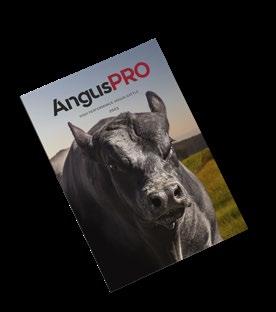

59 anguspro.co.nz
Name Street Postcode Phone Email Suburb City

























































 Words
Words















































































